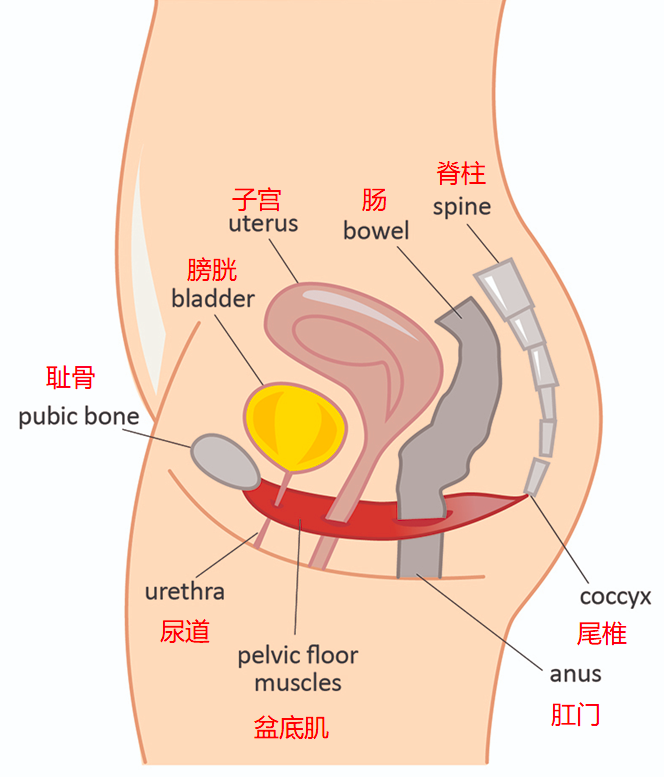Retroverted uterus
Does a Diagnosed Retroverted Uterus Affect Pregnancy? How to Actively Prepare for Pregnancy and Treatment?
The position of the uterus is generally classified as anteverted, mid-positioned, or retroverted. Under normal conditions, it is mostly anteverted with slight anteflexion. Clinically, the severity of a retroverted uterus is usually determined through gynecological examinations. Whether women with a retroverted uterus experience difficulty conceiving depends on the specific circumstances.
Simple Retroverted Uterus
A simple retroverted uterus, if not accompanied by other conditions such as endometriosis or pelvic inflammatory disease, generally does not affect pregnancy. If a woman has normal ovulation, healthy fallopian tube function, and a normal endometrium, her conception rate is not significantly different from that of women with a normal uterine position.
Management: If there are no other gynecological complications, symptoms are usually absent, and no treatment is required.
Retroverted Uterus with Other Gynecological Conditions
More often, a retroverted uterus occurs alongside other gynecological conditions. For example, it may be associated with acute or chronic pelvic inflammatory disease, severe endometriosis, adenomyosis, tissue adhesions, or shortened ligaments. These conditions can also alter the position of the uterus.
Women in this group often experience symptoms, primarily lower back pain. Mild cases may involve only discomfort or soreness in the lower back, while severe cases can cause unbearable soreness throughout the lower back, hips, and tailbone.
Additionally, these gynecological conditions may lead to blocked fallopian tubes or ovulation disorders, making conception relatively more difficult for these women.
Management:
- Treat the underlying condition: For women with a retroverted uterus caused by other gynecological conditions, identifying and treating the primary condition is crucial. Gynecological examinations, ultrasound, and blood tests can help rule out endometriosis, pelvic inflammatory disease, uterine fibroids, adenomyosis, etc. Treatment should then target the primary condition. Only a very small number of women require surgical correction of the uterine position to prepare for pregnancy.
- Develop healthy daily habits: For example, engage in appropriate exercise (about 1 hour daily) to prevent pelvic floor muscle relaxation. Establish regular bowel habits and avoid prolonged urine retention to prevent exacerbating existing inflammation.
It is important to note that methods such as changing intercourse positions or elevating the hips to aid conception are unscientific, lack evidence-based medical support, and are not necessarily reliable. Women with a retroverted uterus should focus on staying relaxed. With active treatment, there is still a chance of conception, and excessive mental stress should be avoided.
How Should Pregnant Women with a Retroverted Uterus Choose a Delivery Method? Is a C-Section Mandatory?
Not necessarily.
A retroverted uterus is not an absolute indication for a cesarean section and generally does not affect the choice of delivery method.
The specific delivery method depends on factors such as the mother's labor strength, birth canal, fetal position and size, and how well these factors align. Therefore, even with a diagnosed retroverted uterus, vaginal delivery is still possible, and expectant mothers need not worry excessively.
Does a Retroverted Uterus Affect the Fetus After Conception?
Generally, whether it is a simple retroverted uterus or one accompanied by conditions like endometriosis or adenomyosis, if conception is successful, the retroverted uterus has little to no effect on the fetus after pregnancy. No special fetal protection treatment is required, and expectant mothers need not worry excessively.
However, if symptoms such as abdominal pain or vaginal bleeding occur during pregnancy, it is important to seek medical attention promptly and undergo an ultrasound to check the fetus's condition.
What Is the Difference Between an Anteverted and Retroverted Uterus?
Both an anteverted and retroverted uterus are normal variations. The uterus is located in the center of the pelvis, with the bladder in front and the rectum behind. The lower end connects to the vagina, as shown in the image below.

An anteverted uterus tilts forward toward the bladder. In adults, the normal uterine position is typically a mild anteversion with anteflexion.
A retroverted uterus tilts backward toward the rectum.
A mid-positioned uterus is parallel to the abdominal wall, neither tilting toward the bladder nor the rectum.
Due to genetic factors, uterine ligaments, and individual differences in pelvic floor muscles and fascia, whether the uterus is anteverted, retroverted, or mid-positioned, all are normal.
Currently, no studies indicate differences in pregnancy rates between women with anteverted or retroverted uteruses. Clinically, many uterine conditions, such as fibroids or adenomyosis, have no clear relationship with uterine position.